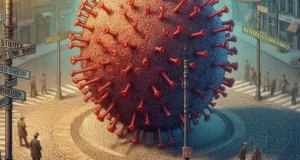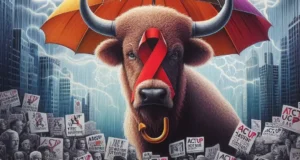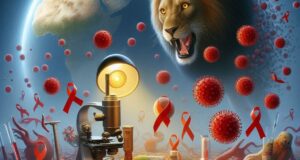Imagine walking through a dense jungle at night, guided only by whispers. Some voices tell you to turn back, others say danger is everywhere, and none are truly reliable. This is what the world looked like in the early days of the AIDS epidemic — a dark forest of confusion, led not by facts, but by misinformation.

When people began asking “AIDS where did it come from?”, the world didn’t have clear answers. And when truth hides, myths rise. Like smoke filling a room with no windows, misinformation seeped into the minds of millions — distorting reality, fueling fear, and painting innocent people as threats.
In the beginning, AIDS was a mystery illness. It didn’t behave like the flu. It attacked silently, weakening the body’s defenses until even minor infections became deadly. But instead of asking science, the world turned to speculation. People believed you could catch AIDS from a handshake, a toilet seat, or even by standing too close to someone. Some said it was a curse. Others said it was divine punishment.
Misinformation was the loudest voice in the room — and it whispered lies with confidence.
Think of misinformation like a cracked mirror. It reflects something familiar, but the image is twisted. In this mirror, AIDS was seen not as a virus, but as a threat linked only to certain groups — the LGBTQ+ community, drug users, or people from specific countries. These reflections were not just inaccurate; they were dangerous. They led to discrimination, panic, and policy failures that cost lives.
Governments, media, and even healthcare professionals — many unknowingly — spread half-truths. Some early news reports suggested that AIDS was airborne. Others treated it as something shameful. This climate of confusion made people afraid to get tested, afraid to ask questions, and worst of all — afraid to care.

When the average person asked, “AIDS where did it come from?”, they rarely got the truth. They got theories. Rumors. Fear-stained guesses. The real answer — that HIV likely crossed from primates to humans in Central Africa through blood contact — was lost in a sea of social stigma and scientific silence.
And just like any wildfire, misinformation spread faster than facts could catch up.
But why did people believe these falsehoods? Because fear demands explanations — and when science is slow, society writes its own stories. Misinformation became a form of emotional self-protection. It was easier to believe AIDS belonged to “others,” that it couldn’t reach “us.” But viruses don’t read passports or care about prejudice. The virus spread, regardless of the lies told about it.
Misinformation doesn’t just hurt individuals — it holds back progress. It delays medical responses, prevents honest conversations, and builds walls between people. When public health experts tried to share facts, they often had to fight against deeply rooted myths.
Today, science has answered the question: “AIDS where did it come from?” We know HIV is transmitted through blood, semen, vaginal fluids, and breast milk — not through hugs, mosquito bites, or sharing food. But even now, remnants of the old myths linger. In some places, misinformation still whispers.
That’s why education matters. Truth is the sunlight that clears the jungle. It burns away the fog of confusion. It corrects the cracked mirror and shows us a clear reflection of what AIDS really is — a manageable condition, not a moral judgment.
So the next time someone repeats a myth, don’t stay silent. Tell them the real story. Explain that “AIDS where did it come from” is not just a scientific question — it’s also a battle against decades of misunderstanding.
Because when we replace misinformation with truth, we don’t just protect health — we restore humanity.




